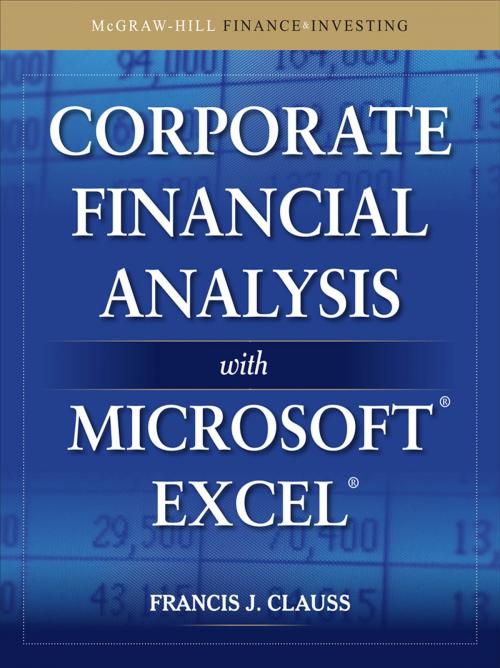Corporate Financial Analysis with Microsoft Excel
Business & Finance, Personal Finance, Investing, Finance & Investing| Author: | Francis J. Clauss | ISBN: | 9780071628846 |
| Publisher: | McGraw-Hill Education | Publication: | August 23, 2009 |
| Imprint: | McGraw-Hill Education | Language: | English |
| Author: | Francis J. Clauss |
| ISBN: | 9780071628846 |
| Publisher: | McGraw-Hill Education |
| Publication: | August 23, 2009 |
| Imprint: | McGraw-Hill Education |
| Language: | English |
Corporate Financial Analysis with Microsoft® Excel® visualizes spreadsheets as an effective management tool both for financial analysis and for coordinating its results and actions with marketing, sales, production and service operations, quality control, and other business functions.
Taking an integrative view that promotes teamwork across corporate functions and responsibilities, the book contains dozens of charts, diagrams, and actual Excel® screenshots to reinforce the practical applications of every topic it covers. The first two sections— Financial Statements and Cash Budgeting— explain how to use spreadsheets for:
- Preparing income statements, balance sheets, and cash flow statements
- Performing vertical and horizontal analyses of financial statements
- Determining financial ratios and analyzing their trends and significance
- Combining quantitative and judgmental techniques to improve forecasts of sales revenues and customer demands
- Calculating and applying the time value of money
- Managing inventories, safety stocks, and the allocation of resources
The third and final section—Capital Budgeting— covers capital structure, the cost of capital, and leverage; the basics of capital budgeting, including taxes and depreciation; applications, such as new facilities, equipment replacement, process improvement, leasing versus buying, and nonresidential real estate; and risk analysis of capital budgets and the potential impacts of unforeseen events.
Corporate Financial Analysis with Microsoft® Excel® takes a broad view of financial functions and responsibilities in relation to those of other functional parts of modern corporations, and it demonstrates how to use spreadsheets to integrate and coordinate them. It provides many insightful examples and case studies of real corporations, including Wal- Mart, Sun Microsystems, Nike, H. J. Heinz, Dell, Microsoft, Apple Computer, and IBM.
Corporate Financial Analysis with Microsoft® Excel® is the ideal tool for managing your firm’s short-term operations and long-term capital investments.
Corporate Financial Analysis with Microsoft® Excel® visualizes spreadsheets as an effective management tool both for financial analysis and for coordinating its results and actions with marketing, sales, production and service operations, quality control, and other business functions.
Taking an integrative view that promotes teamwork across corporate functions and responsibilities, the book contains dozens of charts, diagrams, and actual Excel® screenshots to reinforce the practical applications of every topic it covers. The first two sections— Financial Statements and Cash Budgeting— explain how to use spreadsheets for:
- Preparing income statements, balance sheets, and cash flow statements
- Performing vertical and horizontal analyses of financial statements
- Determining financial ratios and analyzing their trends and significance
- Combining quantitative and judgmental techniques to improve forecasts of sales revenues and customer demands
- Calculating and applying the time value of money
- Managing inventories, safety stocks, and the allocation of resources
The third and final section—Capital Budgeting— covers capital structure, the cost of capital, and leverage; the basics of capital budgeting, including taxes and depreciation; applications, such as new facilities, equipment replacement, process improvement, leasing versus buying, and nonresidential real estate; and risk analysis of capital budgets and the potential impacts of unforeseen events.
Corporate Financial Analysis with Microsoft® Excel® takes a broad view of financial functions and responsibilities in relation to those of other functional parts of modern corporations, and it demonstrates how to use spreadsheets to integrate and coordinate them. It provides many insightful examples and case studies of real corporations, including Wal- Mart, Sun Microsystems, Nike, H. J. Heinz, Dell, Microsoft, Apple Computer, and IBM.
Corporate Financial Analysis with Microsoft® Excel® is the ideal tool for managing your firm’s short-term operations and long-term capital investments.















